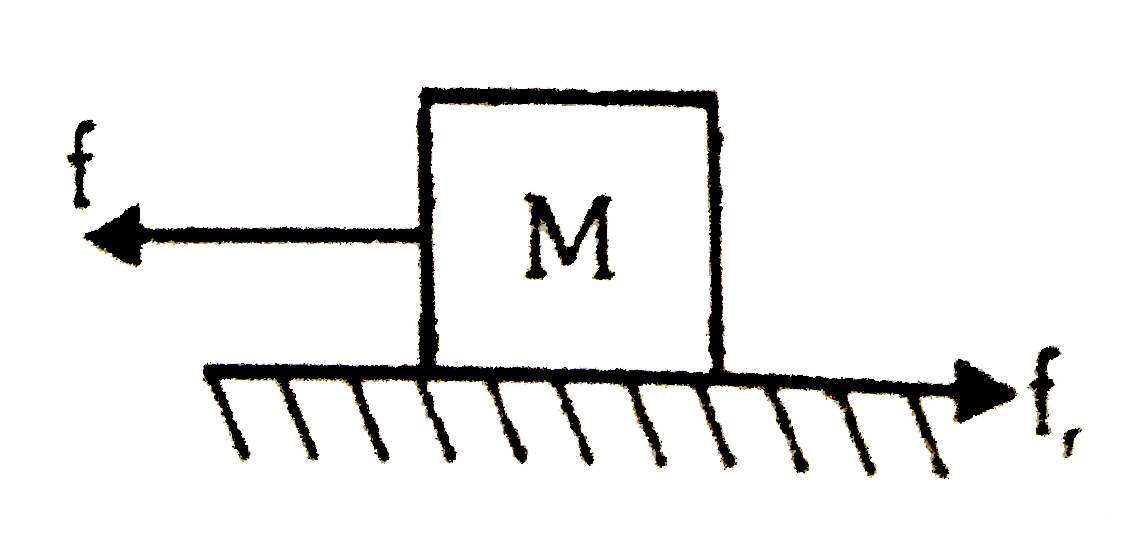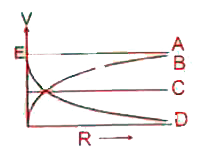In a network as shown in the figure the potential difference across the resistance 2R is (the cell has an emf of E and has no internal resistance):
 Solution in Gujrati
Solution in Gujrati
7E4R
4E7
5E7
8E
The correct Answer is:C

f=vdmdt=2(20)=40⇒fr=μmg
m=40=M0−2(t)⇒t=5sec
so (0.1)(50−2t)=40⇒t=5sec
Topper's Solved these Questions
- CURRENT ELECTRICITYBOOK - ALLEN CHAPTER - CURRENT ELECTRICITYEXERCISE - EXERCISE-IV A
32 Videos
- CURRENT ELECTRICITYBOOK - ALLEN CHAPTER - CURRENT ELECTRICITYEXERCISE - EXERCISE-IV B
14 Videos
- CURRENT ELECTRICITYBOOK - ALLEN CHAPTER - CURRENT ELECTRICITYEXERCISE - EX.II
66 Videos
- CIRCULAR MOTIONBOOK - ALLEN CHAPTER - CIRCULAR MOTIONEXERCISE - EXERCISE (J-A)
6 Videos
- GEOMETRICAL OPTICSBOOK - ALLEN CHAPTER - GEOMETRICAL OPTICSEXERCISE - subjective
14 Videos
Similar Questions
By a cell a current of 0.9 A flows through 2 ohm resistor and 0.3A through 7 ohm resistor. The internal resistance of the cell is
View SolutionIn the circuit shown below. The reading of the voltmeter V is

View SolutionIn the Bohr's model of hy drogen atom, the electron moves around the nucleus in a circular orbit of radius 5×10−11m. Its time period is 1.5×10−16s. The current associated with the electron motion is:-
View SolutionA ball of mass (m)0.5kg is attached to the end of a string having length (L)0.5m. The ball is rotated on a horizontal circular path about vertical axis. The maximum tension that the string can bear is 324N. The maximum possible value of angular velocity of ball (radian/s) is -
 .
.
View SolutionA prism of refractive index n1 & another prism of reactive index n2 are stuck together without a gap as shown in the figure.The angle of the prisms are as shown. n1&n2depend onλ,the wavelength of light according to n1=1.20+10.8×104λ2&n2=1.45+1.80×104λ2 where λ is in nm.

(i)Calculate the wavelength λ0for which rays incident at any angle on the interfaceBCpass through without bending at that interface.
(ii) for light of wavelength λ0,find the angle of incidencei on faceACsuch that the deviation produced by the combination of prism is minimum.
View SolutionCell A has emf 2 E ad internal resistance 4 r. Cell B has emf E and internal resistance r. The negative of A is connected to the positive of B and a load resistance of R is connected across the battery formed. If the terminal potential difference across A is zero, then R is equal to
View SolutionA cell has an emf 1.5V. When connected across an external resistance of 2Omega , the terminal potential difference falls to 1.0V. The internal resistance of the cell is:
View SolutionIf E is the emf of a cell of internal resistance r and external resistance R, then potential difference across R is given as
View SolutionIn a network as shown in the figure the potential difference across the resistance 2R is (the cell has an emf of E and has no internal resistance):
View SolutionThe figure shows a network in which the cell is deal and it has an emf E. The potential difference across the resistance 2R is

View SolutionA cell of emf 'E' is connected across a resistance R.The potential difference between the terminals of the cell is found to be "V" .The internal resistance of the cell must be:
View Solutionv31
View SolutionA cell of emf E has an internal resistance r & is connected to rheostat. When resistance R of rheostat is changed correct graph of potential difference across it is
View SolutionA cell of emf E has an internal resistance r & is connected to rheostat. When resistance R of rheostat is changed correct graph of potential difference across it is
View SolutionA cell of emf E having an internal resistance r is connected to an external resistance R. The potential difference V across the resistance R varies with R as shown in figure by the curve: R

View SolutionA cell E_1 of emf 6V and internal resistance 2 Omega is connected with another cell E_2 of emf 4V and internal resistance 8 Omega (as shown in the figure). The potential difference across points X and Y is :
View Solution
